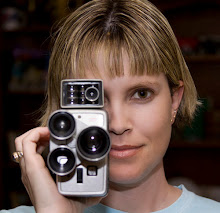[Note: I wrote this review way back in March 2013. My feelings regarding found footage still stand.]

Found footage movies have always piqued my curiosity, but they always seem to let me down for one reason or another. From the godawful shaky-cam to poor storytelling to even worse, annoying characters. While I've found it to be an interesting (and cheap) way to tell a story, most found footage movies fail to deliver. Truthfully, most suck.
Why is that? As a filmmaker, I would not make a found footage movie unless I could come up with that one element that would set it apart from its brethren. Let's look at the core. What is found footage? Well, it is footage, or video, of some random event in time that could have been recorded or documented by anyone with a video camera, be it consumer or professional grade, or even a cell phone. It would be like if I witnessed a fight between two people in public and I recorded it with my iPhone. That's real footage of an actual event.
Now, say that event turned into a massive media frenzy or, say the world was obliterated by an alien invasion. And one of those alien beings found my iPhone and watched the video of that fight in the street. That would be found footage. But it's the compelling reason that footage is released that truly tells a story.
So how does a filmmaker use that to tell a story?
There's no denying the filmmakers would have to show that footage at some point. But to me, the big aspect that has been missing in the current crop of found footage movies is simply, why. There has to be a reason to tie it all together. In the case of The Bay, there is a narrative, and journalist Donna (Kether Donohue) leads us through a faux documentary to tell the story of what happened in a small town during a town-wide 4th of July celebration. She was there documenting the festivities and witnessed these events in person. In the time since, she believes there has been a coverup. Evidently, the mayor (who obviously hasn't seen Jaws) didn't want the true cause getting out and causing mass hysteria. Um, too late. Now Donna is out to show the world what really caused this disaster in the small town on Chesapeake Bay.
The documentary style lends realism to this narrative, and it's a compelling enough reason to warrant digging up old news broadcasts, Skype conversations, and cell phone footage to show proof. (There's the why!) We see the story unfold in first person perspective (with Donna narrating), so there's no over the shoulder shots or reaction shots. But that's how it was for them. It was real. So, what did happen? Small isopods (these actually exist, by the way!) that live in fish have mutated into larger, carnivorous creatures which have infected the water supply in the town.
Needless to say, pretty much the entire town comes in contact with this water in one way or another. Since this is body gross-out horror, there is ample gore to be found here. Mainly in the form of skin lesions, open sores, and the like. In other words, The Bay is light on the scares, but heavy on the real life icky. Cronenberg would be proud.
Thank you, Mr. Levinson for pushing the found footage subgenre a little further up the storytelling food chain. With very few good found footage movies out there, it's kinda ironic that a non-horror filmmaker is the one who finally gets it right.
Care for a swim, anyone?

No comments:
Post a Comment